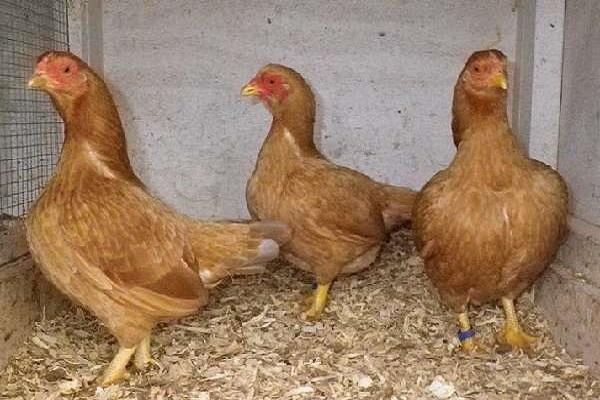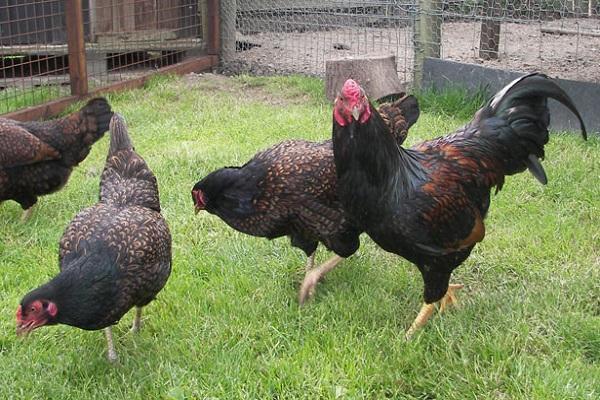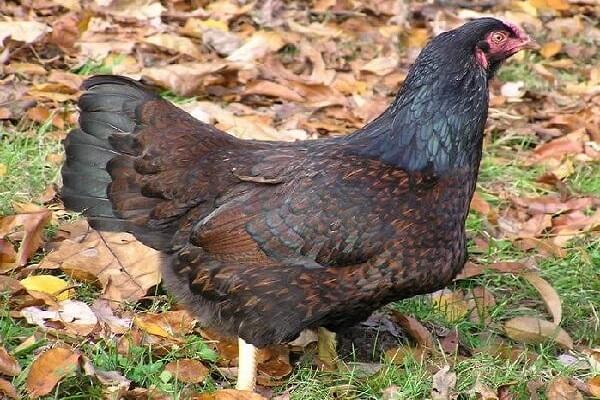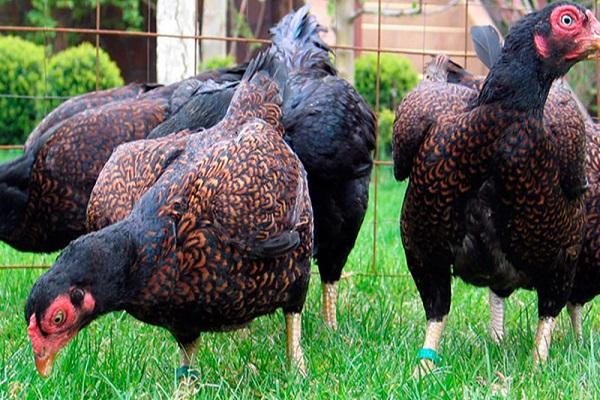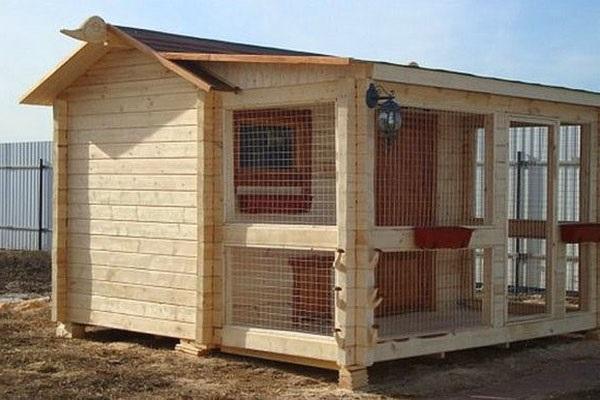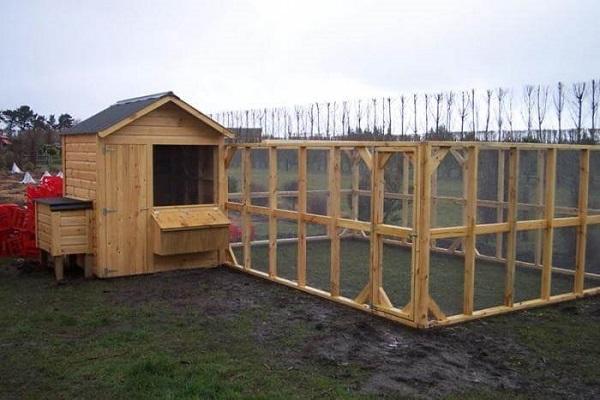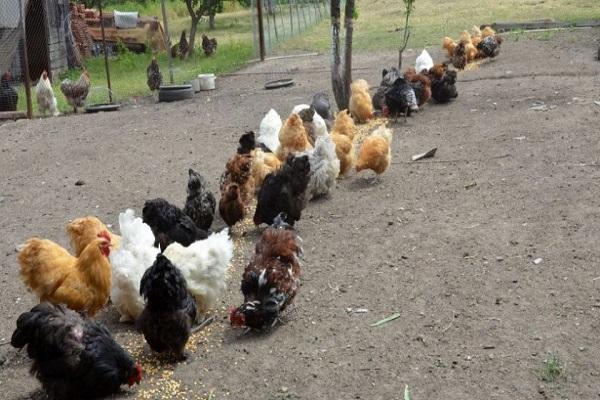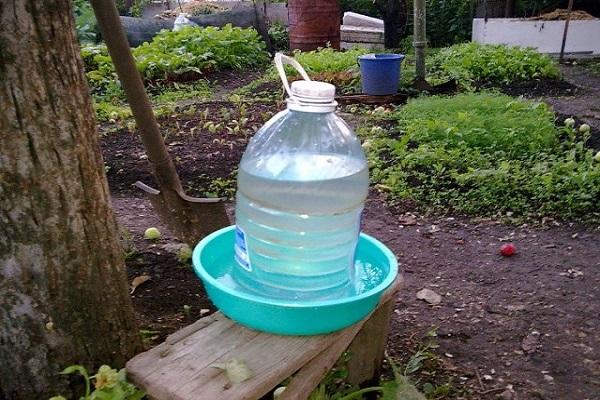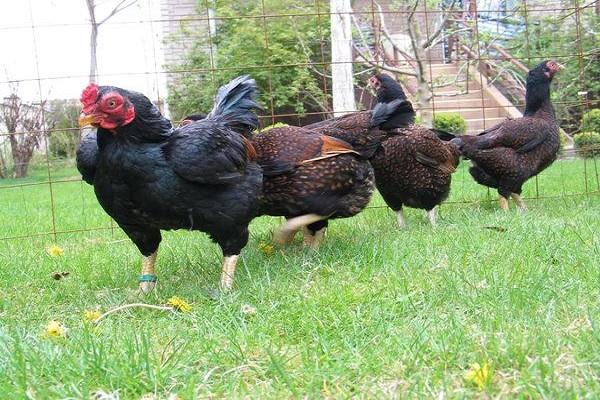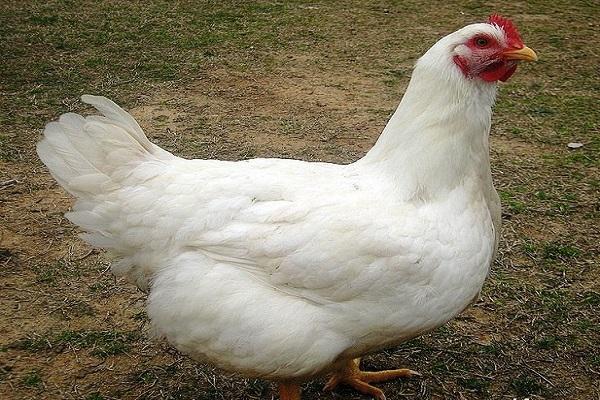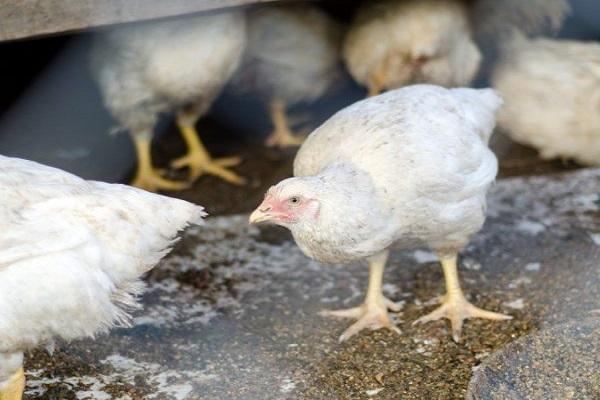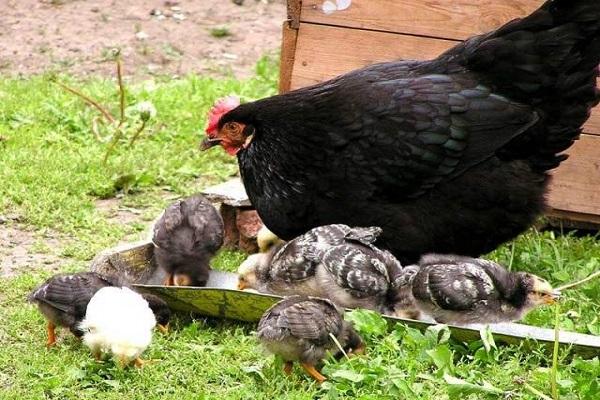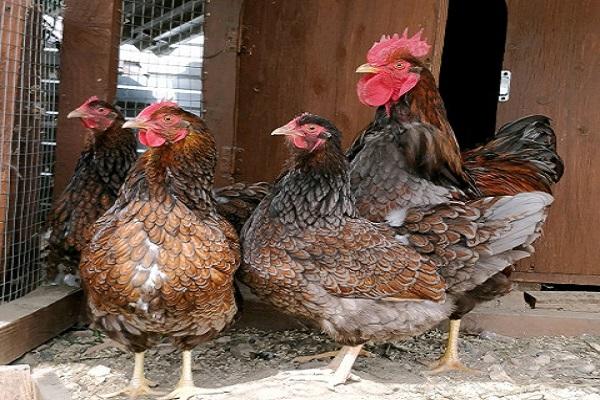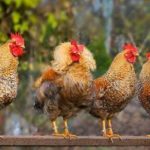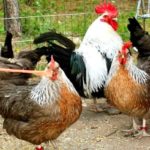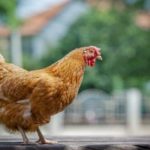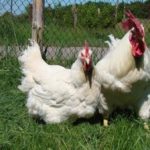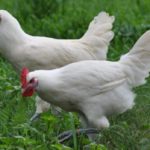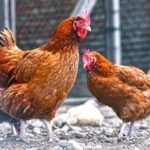Chickens of the Cornish breed are stocky, broad-chested beauties, rightfully occupying a leading position in amateur poultry farming. Cockerels match them and will decorate any chicken coop. Beauty, good external quality indicators, unpretentiousness in maintenance and care, high productivity constantly attract new fans of this bird.
- History of appearance
- Description and characteristics of the breed
- Birds exterior
- Character of birds
- Breed productivity
- Advantages and disadvantages of Cornish chickens
- Features of keeping birds
- Poultry house
- Yard for walks
- Feeders and drinkers
- Seasonal molt
- Planned herd replacement
- Breed diet
- Adult chickens
- Chickens
- Breeding rules
- When does puberty occur?
- Nuances of caring for chickens
- What breeds are Cornish chickens crossed with?
- Possible diseases
History of appearance
The creation of the breed began in the 1830s in England, in the county of Cornwall, by crossing red Asil chickens with Old English fighting chickens. The chickens that were bred did not receive recognition because they had low weight and egg production. The resulting cross was crossed with Malayan chickens, which made it possible to obtain larger specimens with tender, juicy meat. At first, Cornish chickens were called Cornish fighting chickens, then Indian fighting chickens. The final name was established as a slang derivative of the name Cornwall.
The bird has spread throughout the world. Brought to the Soviet Union in 1959. Used in industrial poultry farming. Currently, the Cornish breed is bred by amateur poultry farmers.
Description and characteristics of the breed
Cornishes are beautiful, they have a calm character, and are highly productive.
Birds exterior
Cornish chickens are easily distinguished from other chickens by their bright colors. Colorful appearance.
External data:
- the plumage is close-fitting, smooth, legs without feathers;
- pisiform comb;
- short, squat stature, short, thick legs, wide chest;
- ring size 27/22, for dwarfs 18/15;
- Varieties of plumage colors - black with double edge, blue with double edge, white with double edge, white.
Character of birds
The character is calm with an aggressive appearance, inherited from fighting ancestors. Chickens are good brood hens. Getting used to the climate is quick.
Breed productivity
Farmers value Cornish chickens for their high productivity and versatility.
Basic indicators:
- live weight of adult roosters is 3.7-4.5 kg, chickens - 2.7-3.2 kg, dwarf form 1.5/0.9 kg;
- egg production 70-160 eggs per year;
- egg color is cream, weight 55/30;
Advantages and disadvantages of Cornish chickens
The main advantage of Cornish chickens is their meat. If the feeding regimen is followed correctly, it turns out moderately fatty, juicy and tender..
The bird is gaining weight quickly. By 2 months ready for slaughter. The carcass weight of roosters at this age reaches 3 kg, hens - 2 kg. In this case, 140-160 g of feed are consumed per head, which is much less than when fattening a broiler.
Considering the much lower mobility compared to other chickens, the stocking rate of Cornishes in the chicken coop is increased by 30%, which has a positive effect on saving space.
The bird, thanks to its exterior, is a decoration for any chicken coop. The wide body and short legs give the Cornish a dinosaur-like appearance. Despite their aggressive appearance, there are no serious fights between roosters. The clashes resemble a ritual dance.
The disadvantage of Cornish chickens is that at an early age, with an incorrectly selected diet or a violation of the diet, their muscle tissue growth is faster than the growth of skeletal bones. This leads to decreased or loss of mobility, obesity, diseases of the limbs and internal organs.
The specific body structure of Cornish roosters does not allow normal egg fertilization to be achieved. Chick hatchability is low.
Chicken meat becomes tough and less tasty with a long period of fattening. Therefore, they have to be killed before or during molting, which makes plucking difficult.
Features of keeping birds
Cornish chickens are easy to care for and are unpretentious.
Poultry house
It is better to place Cornish chickens in a permanent building. Recently, OSB slabs and panels made from them with internal insulation have become popular materials for poultry house walls. The thickness is selected depending on the temperature conditions in the region. It is 100-150 mm.The roof is covered with galvanized corrugated sheeting.
The area of the poultry house is calculated according to the standards for keeping meat chickens. They amount to 5-6 heads per 1 sq. m. for floor maintenance. It is better to make the floor concrete.
To minimize damage from rodents, it is recommended to add broken glass to the solution when pouring.
The floor is made with a recess of 15-20 cm from the threshold level. This space is filled with hardwood sawdust or chopped straw.
Perches are not necessary. Cornish feels comfortable on the litter. For laying hens, nests are installed in the poultry house at the rate of 1 per 5-6 hens. They are wooden boxes with dimensions of 400x400x600 cm with a semi-open front wall for entry. Straw or hay spreads to the bottom.
Cornish tolerates cellular contents calmly. The cages used are the same as for broilers. They are equipped with their own drinkers and feeders.
Yard for walks
They are attached close to the chicken coop. The structure is a frame made of wooden or metal posts covered with mesh. It is better to take galvanized steel. Foxes and hori may live nearby and can easily tear through plastic fencing. The walkway is equipped with a separate entrance.
The top is made closed. Cellular polycarbonate is suitable for this purpose. The poultry house is equipped with a manhole with a door to close at night. If it is made high above the ground, then a ladder is built so that the chickens are not injured.
Feeders and drinkers
Installed indoors and outdoors. Automatic devices are suitable for convenience. Hopper feeders, bulk, with a capacity of 2 to 18 kg, depending on the number of chickens. They are hung or placed on a hard, flat surface.
Nipple drinkers.They are economical and eliminate water spillage. Vacuum drinking bowls are installed on the paddock. It is necessary to ensure that there is always fresh water in the drinking bowls and that they are available at any time of the day. An adult Cornish drinks 400-500 g of water per day.
In the room, containers are installed for the ash-sand mixture and mineral additives - chalk, crushed shells, clay, coal, gravel.
Seasonal molt
The first, juvenile molt in Cornish chickens begins at 5-6 weeks and ends with the start of egg laying. Seasonal molts occur in autumn and spring. They are associated with a decrease or increase in daylight hours. The bird is preparing for a change in temperature and acquires additional feathers or sheds excess feathers. This protects itself from freezing and overheating.
Experienced poultry farmers sometimes send their charges into forced molting.
Planned herd replacement
The egg production of Cornish hens declared by the breed standard is maintained for 3 years. In some chickens it decreases earlier. Therefore, it is recommended to replace individual animals at the age of two. The herd is completely replaced at 3 years of age.
Breed diet
Cornish is an early maturing breed. Therefore, the diet is compiled based on this indicator.
Adult chickens
From the age of 7 weeks until slaughter, if chickens are fattened for meat, they are fed with PK-6 feed for broilers. You can use PK-12 for young turkeys. If chickens are transferred to the category of replacement young animals, then from 12-14 weeks they are transferred to PK-2 compound feed for laying hens and a grain mixture of wheat, barley, and crushed corn.
In the absence of high-quality feed, they are prepared independently.Mineral and vitamin supplements, fish, meat and bone or blood meal, nettles and other herbs and vegetables are added to the grain base..
Chickens
On the first day of life, chickens do not need to be fed. The remaining yolk is enough for them to eat. 10-12 hours after hatching, they are given water with a solution of glucose and ascorbic acid. Give boiled water for up to 10 days. From the second day to 7 weeks they are fed with PK-2 or PK-5 feed. These are starter feeds that ensure the growth and strengthening of bone tissue and rapid weight gain.
To improve intestinal function, chickens from two weeks of age are given yogurt or whey.
Breeding rules
With proper care, Cornish chickens grow quickly and rarely get sick.
When does puberty occur?
Sexual maturity in the Cornish breed occurs at 7-8 months. However, it is recommended to allow hens to incubate and select eggs for incubation no earlier than 10-11 months. Roosters are selected for hens that are 2-3 months older.
Nuances of caring for chickens
From the first days of life, Cornish chickens require more attention than young chickens of other breeds. They fledge much slower than their relatives at the age of 1.5-2 weeks. When there is a sudden cold spell, they can get sick or injured when they huddle together. Therefore, there must be a source of additional heating in the brooder or chicken coop.
It is advisable for older chickens to have a free range covered with grass. To reduce the risk of obesity, these beauties need to move more.
What breeds are Cornish chickens crossed with?
The Cornish chicken breed has long been a biological material for crossing with other meat-egg breeds, mainly Plymouthrock and Sussex, to produce broiler crosses.Some breeders are experimenting and crossing the Cornish breed with Barnevelder, Leghorn, Wyandotte, and Rhodeyland.
Possible diseases
These include diseases of the digestive system that arise from poor nutrition. If such diseases are suspected, chickens are transferred to a gentle diet. The food should contain a predominance of fiber and vitamins. This is sprouted grain of oats and barley, nettle. They give milk skim milk. They try to keep the bird free-range.
To prevent coccidiosis, Cornish chickens aged 14 days are fed Baycox for 2 days. At least twice a year, chickens should undergo anthelmintic treatment. The best drugs are Tetramizole and Alben.

